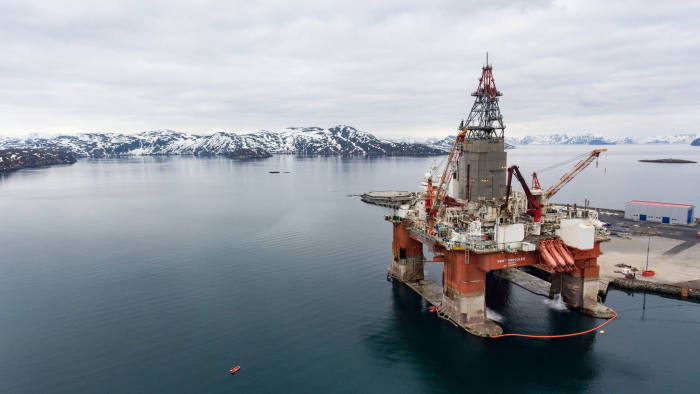
The growth in renewable energy supplies is making progress — but it should be kept in perspective. The International Energy Agency published a report last week confirming that, helped by falling costs, the amount of power produced by renewables should expand by 50 per cent over the next five years, with solar leading the way. However, as the IEA says, this is not sufficient to deliver a sustainable energy system.
Across the sector, hydrocarbons — oil, gas and coal — continue to dominate the market. The investment needed to achieve the target of net zero carbon by 2050, now endorsed by more than 60 countries, is not yet in place. If the capital markets are reluctant to finance the energy transition, alternative approaches will have to be adopted.
The resilience of the established energy economy is evident from the numbers. Renewables currently supply around 5 per cent of global energy demand. In 10 years’ time, even with strong growth they will still only account for 12 per cent. Coal continues to be the largest single source of electricity worldwide, with 38 per cent of the market, and in countries including India, Poland and Indonesia new coal-fired power stations are still being built.
Although over time renewables will come to be the main supplier of electricity, that could take 20 years or more. And, of course, electricity is not the only provider of power. Coal and gas still predominantly fuel industry and heating, and oil overwhelmingly supplies transport. The energy transition has a long way to run.
Meanwhile, in 2018, of the $1.8tn invested in all aspects of the energy sector, around $300bn went into renewables. The bulk of the rest was devoted to fossil fuels, led by oil and gas.
The reasons for this imbalance are clear. The low cost and ready availability of renewables means few projects can make returns of more than 5 to 8 per cent. The barriers to entry in the sector are low — anyone can become an electricity producer and schemes that allow surpluses to be sold back into the grid are encouraging both businesses and households to build their own capacity.
The electricity sector is extremely competitive — with established nuclear, hydro, natural gas and, in many markets, coal vying for market share. The downward trend in prices will put further pressure on margins and profits.
The tension that the choice between renewables and fossil fuels creates is evident in the investment committees of many of the major energy companies. Typical investments in oil and gas projects, where the barriers to entry are much higher, earn returns of 15 per cent or more. How can the next offshore wind farm, selling power into the hugely competitive electricity market, be justified over the next oilfield?
The renewables sector is also fragmented. It is hard for individuals, and even some big funds that would like to invest in the transition, to judge the merits of the numerous enterprises on offer or to predict which technologies will be winners. There are as yet few large-scale renewable businesses capable of spreading risk across multiple low-carbon technologies and across different geographies.
The answer to speeding up the transition perhaps lies in an extremely unfashionable approach — public sector investment. This is not to advocate a return to old-fashioned nationalisation. A better approach is a mixed economy model in which the state provides long-term capital and balances the relatively low commercial rate of returns with the value to the public good.
Combining public financial support with enterprises run to the commercial disciplines of the private sector can be effective. BP was created on this basis and became one of the world’s leading companies. Statoil, now Equinor, was set up by the Norwegian government almost 50 years ago to develop the country’s oil and gas resources and is now one of the world’s biggest offshore operators.
Embracing such an approach requires a recognition that renewables and wider low-carbon developments have a value beyond short-term financial returns and need distinct treatment. One of the key roles of the public sector is to step in when the market is failing.
